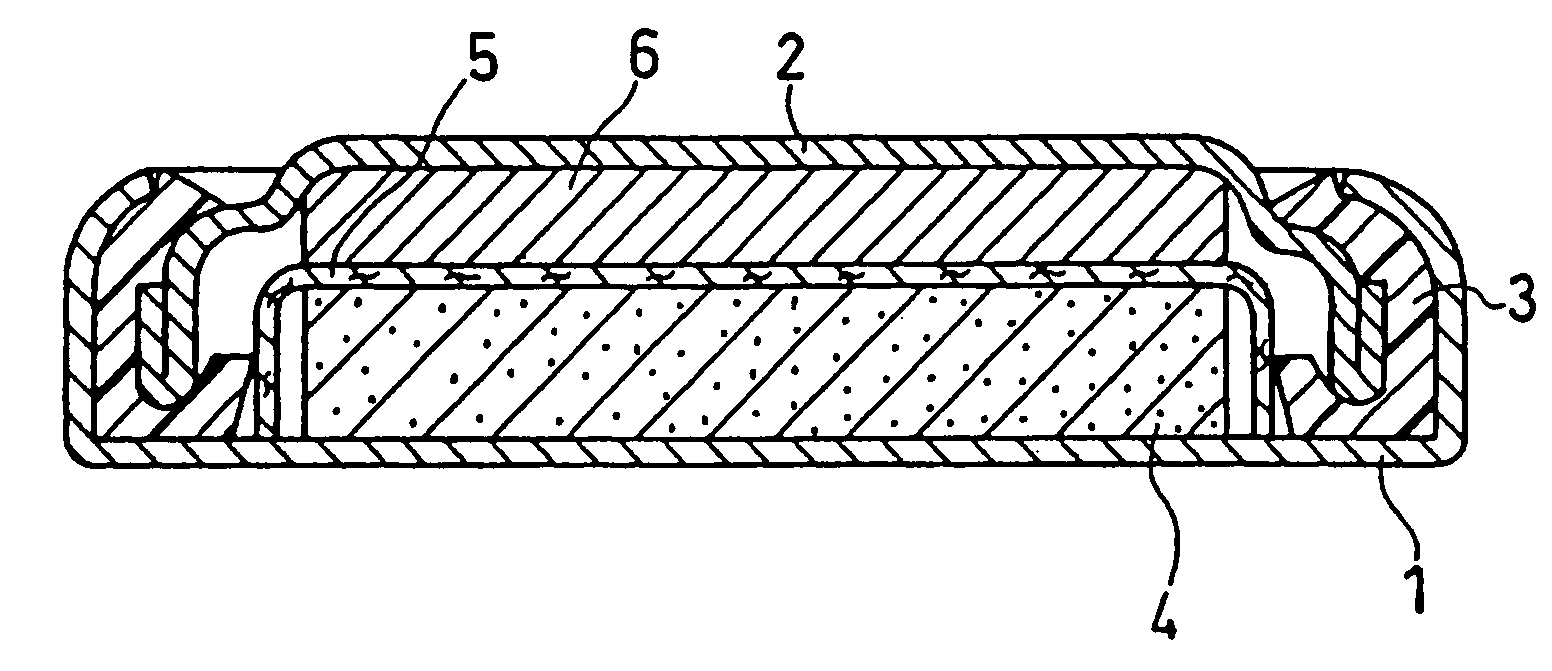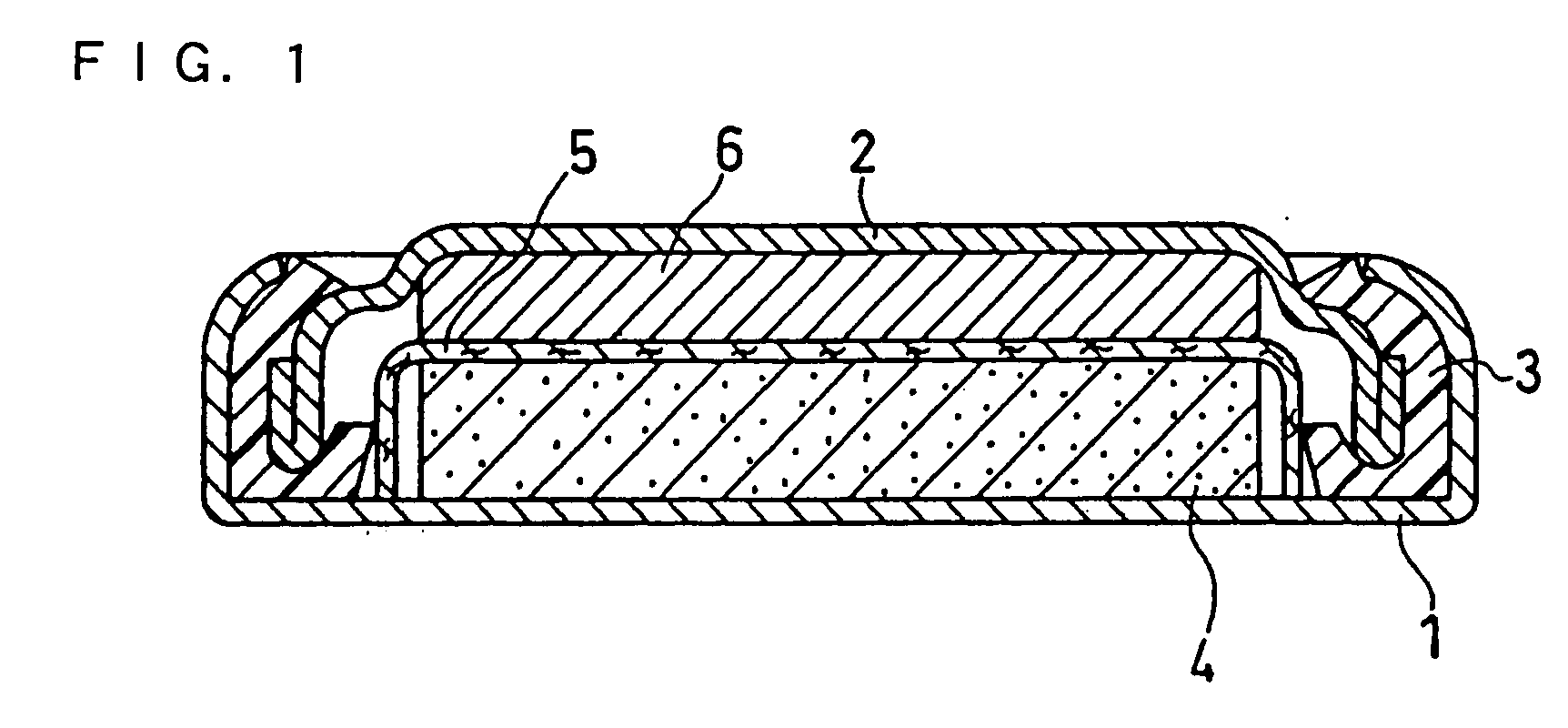Non-Aqueous Electrolyte Secondary Battery and Method for Producing Negative Electrode Therefor
- Summary
- Abstract
- Description
- Claims
- Application Information
AI Technical Summary
Benefits of technology
Problems solved by technology
Method used
Image
Examples
example 1
[0099]In this example, the negative electrode active material obtained from the above powder mixture (1) was used, and the mean particle size was examined. The weight ratio of an Si phase which is the A phase in the negative electrode active material was made 30% by weight. The negative electrode active material was produced by the mechanical alloying method, and measurements of its particle size distribution revealed a wide size range of 0.5 to 200 μm and a mean particle size (D50) of 50 μm. The negative electrode active material was adjusted so as to have the particle size distribution shown in Table 1 by classifying the negative electrode active material with a sieve. The negative electrode pellet was then molded using the negative electrode active material having each particle size distribution, and the battery evaluation was performed using this negative electrode pellet. The negative electrode active materials of the batteries 1 to 8 were not classified with the sieve. Table 1...
example 2
[0102]In this example, the negative electrode active materials obtained from above powder mixtures (2)-(5) were used. The weight ratio of the Si phase which is the A phase in the negative electrode active material was made 30% by weight. In example 2, as the kind of the transition metal contained in the second phase (B phase) in the negative electrode active material, the cases of Ti, Zr, Ni, Cu and Fe were examined as shown in Table 2. As comparative examples, the transition metals of Co and Mn were also examined.
[0103]The producing method of the negative electrode active material is described above. The weight ratio of the Si phase which is the A phase in the negative electrode active material was made 30% by weight. The mean particle sizes (D50) respectively obtained after sieving were 1.0 μm as shown in Table 2.
[0104]Except that different transition metals were used, each negative electrode active material was the same as the above material. However, all of the negative electrod...
example 3
[0108]This example examined a method for wet-grinding the negative electrode active material produced by the mechanical alloying method using balls as the medium when the transition metal contained in the B phase was Ti.
[0109]Zirconia balls having a diameter of 5 mm were used as the balls (media). A 500-ml polyethylene container was used as the container. n-butyl acetate of 120 ml was used as the dispersion medium. The revolution frequency of the ball mill was made 120 rpm. Thereafter, the negative electrode active material was collected by removing the dispersion medium. A predetermined particle size adjustment was performed by adjusting the grinding time.
[0110]The synthesis method of the negative electrode active material, and the methods for production and evaluation of the battery are the same as those of the above examples.
[0111]Table 3 shows material yields when the particle size is adjusted by the wet grinding of this example. Also, for comparison, the material yields when si...
PUM
| Property | Measurement | Unit |
|---|---|---|
| Length | aaaaa | aaaaa |
| Length | aaaaa | aaaaa |
| Length | aaaaa | aaaaa |
Abstract
Description
Claims
Application Information
 Login to View More
Login to View More - R&D
- Intellectual Property
- Life Sciences
- Materials
- Tech Scout
- Unparalleled Data Quality
- Higher Quality Content
- 60% Fewer Hallucinations
Browse by: Latest US Patents, China's latest patents, Technical Efficacy Thesaurus, Application Domain, Technology Topic, Popular Technical Reports.
© 2025 PatSnap. All rights reserved.Legal|Privacy policy|Modern Slavery Act Transparency Statement|Sitemap|About US| Contact US: help@patsnap.com


